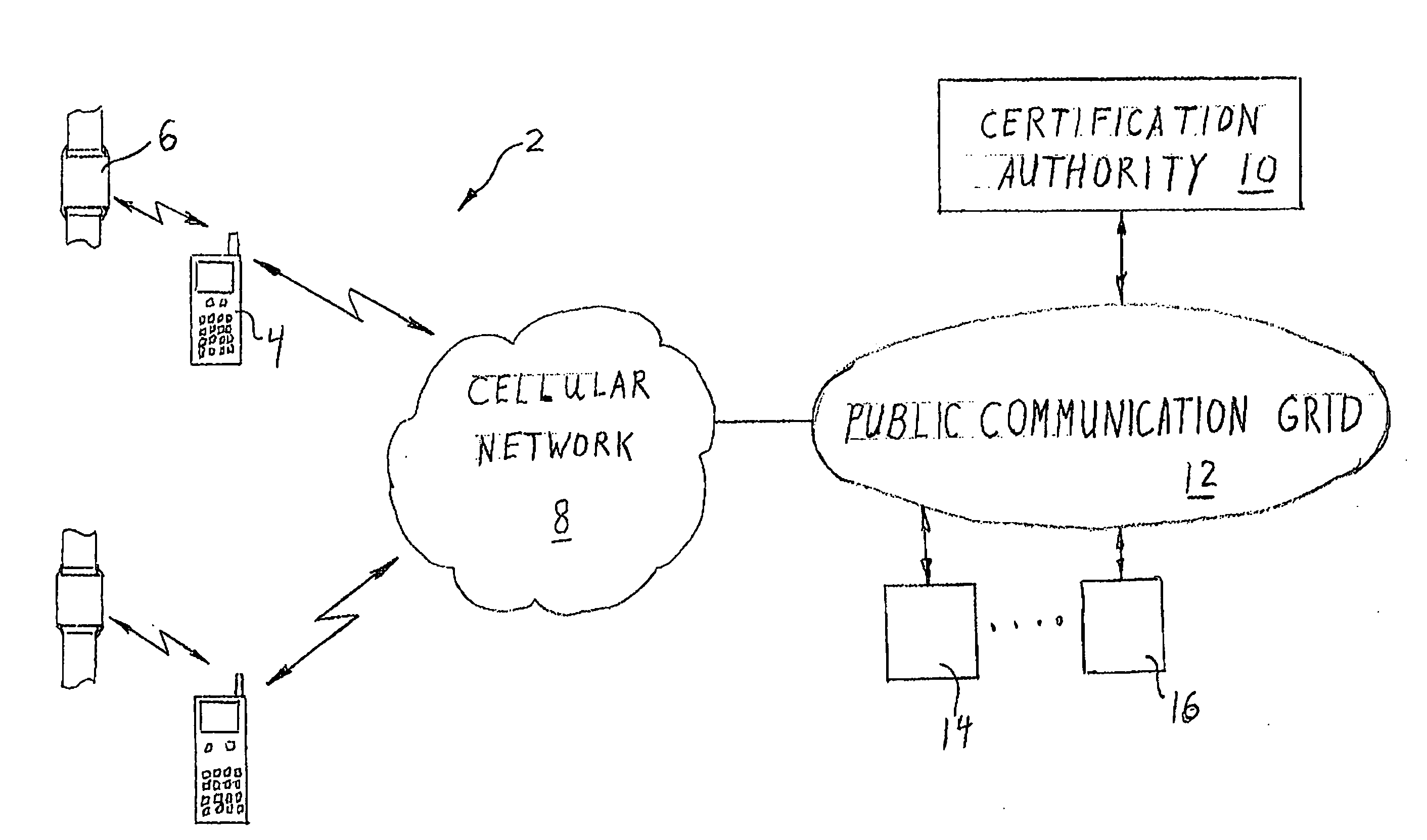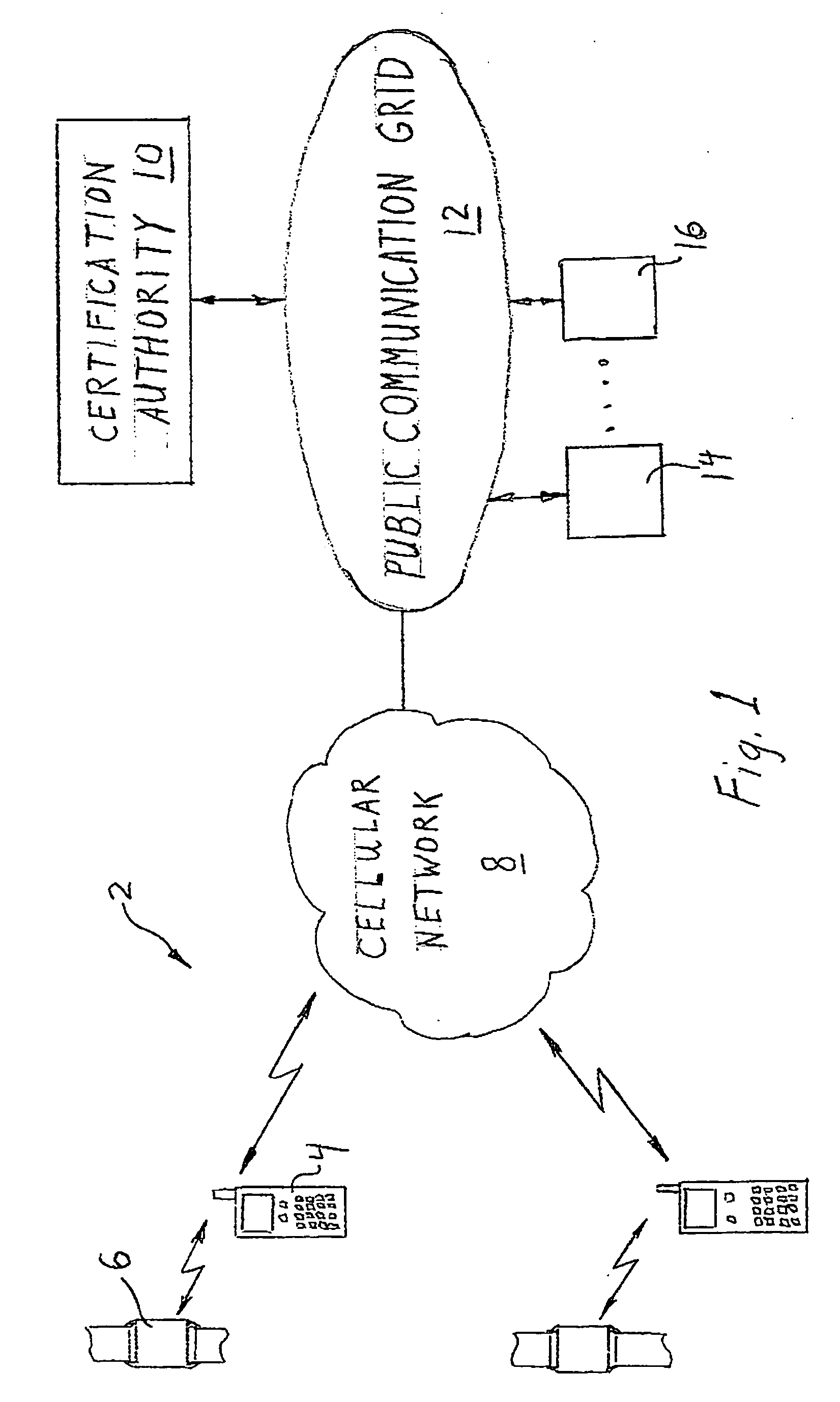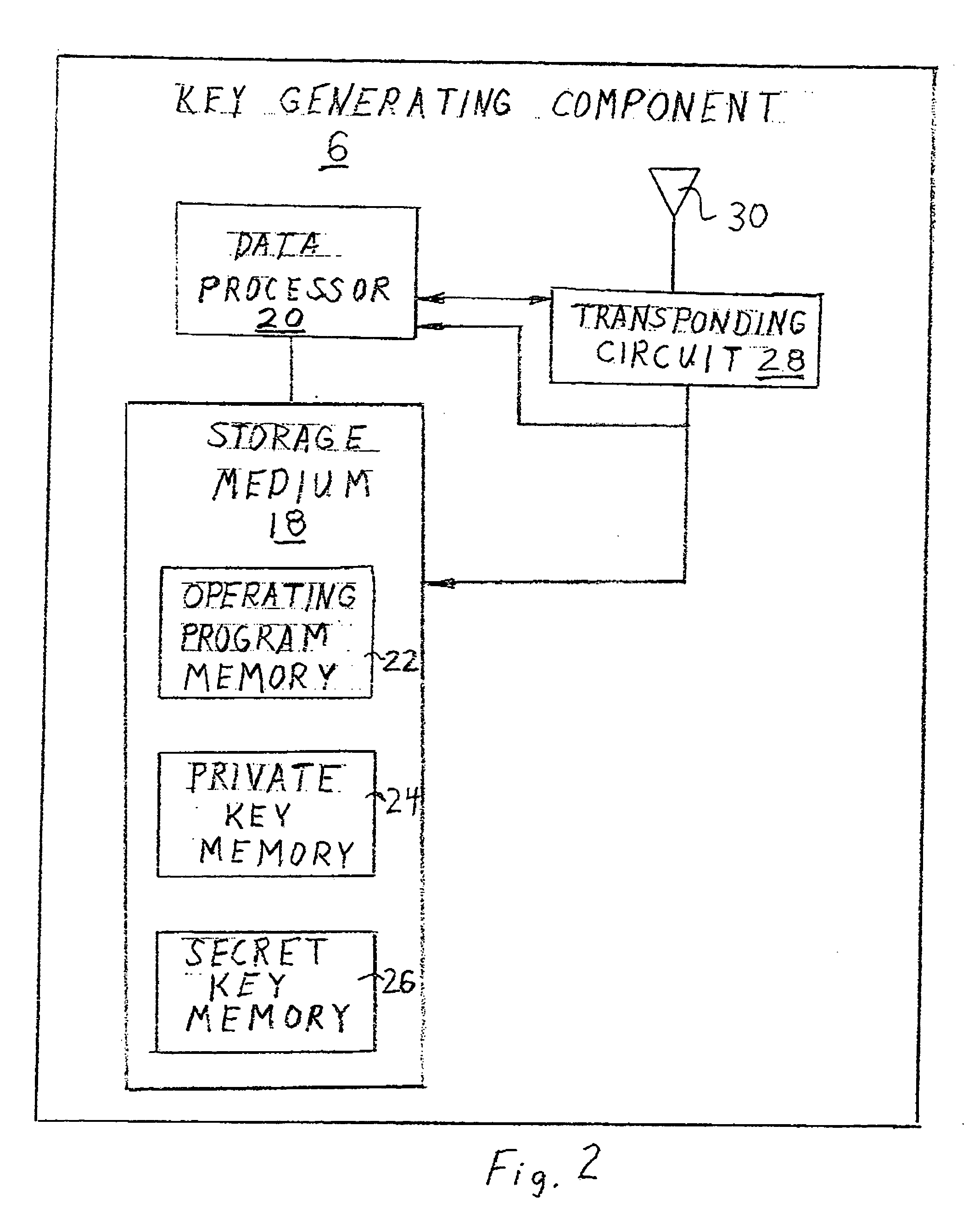Security system for handheld wireless devices using-time variable encryption keys
a security system and wireless device technology, applied in the field of handheld wireless devices usingtime variable encryption keys, can solve the problems of false security impression, difficult use of secret encryption/decryption functions or algorithms, and failure of encryption techniques to deliver on the promise of secure communication, etc., to achieve simple billing, low cost, and high security
- Summary
- Abstract
- Description
- Claims
- Application Information
AI Technical Summary
Benefits of technology
Problems solved by technology
Method used
Image
Examples
Embodiment Construction
[0060]FIG. 1 is a schematic illustration of the subject invention which involves the application of encryption technology to a personal wireless communication system 2 in a unique manner to solve privacy and reliability problems associated with secure communication and unique user identification. In particular, the subject invention involves the use of differentiated wireless components, including in one embodiment, a specially modified wireless handset 4 (such as a special cellular telephone) and a companion encryption key generating component 6 adapted to be mounted on the body of the individual cellular subscriber who operates the wireless handset 4. These components are arranged to communicate wirelessly with one another and to cooperate in transceiving messages over a conventional public communication network including a cellular wireless network 8. More particularly, the wireless handset 4 is designed to communicate with a certification authority 10 through a public communicat...
PUM
 Login to View More
Login to View More Abstract
Description
Claims
Application Information
 Login to View More
Login to View More - R&D
- Intellectual Property
- Life Sciences
- Materials
- Tech Scout
- Unparalleled Data Quality
- Higher Quality Content
- 60% Fewer Hallucinations
Browse by: Latest US Patents, China's latest patents, Technical Efficacy Thesaurus, Application Domain, Technology Topic, Popular Technical Reports.
© 2025 PatSnap. All rights reserved.Legal|Privacy policy|Modern Slavery Act Transparency Statement|Sitemap|About US| Contact US: help@patsnap.com



